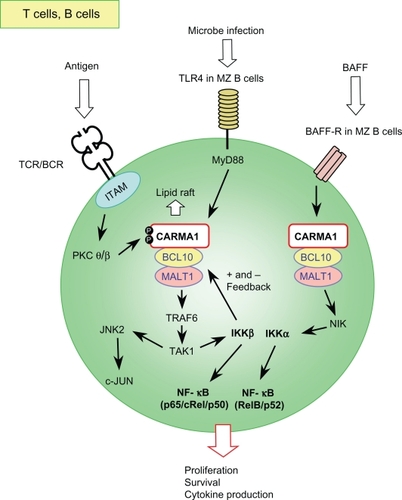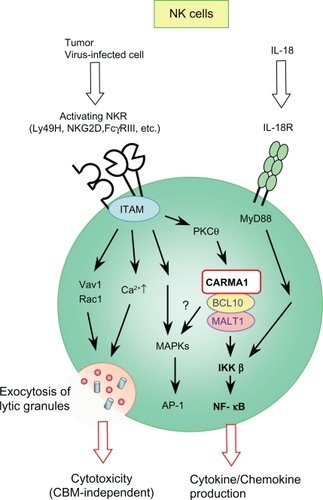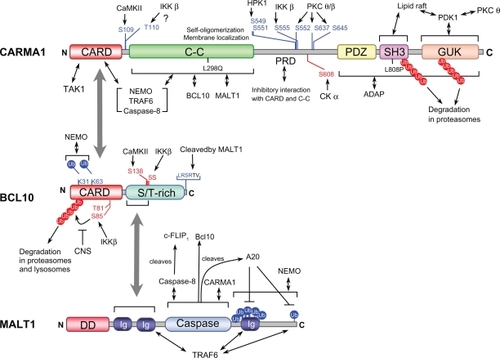Figures & data
Figure 1 L-CBM complex and M-CBM complex.
Abbreviations: L-CBM, lymphoid-CARMA1-BCL10-MALT1; M-CBM, myeloid-CARD9-BCL10-MALT1; CARD, caspase recruitment domain; C-C, coiled-coil domain; PRD, protein-kinase-C-regulated domain; PDZ, PSD95, DLGA and ZO1 homology domain; SH3, Src-homology 3 domain; GUK, guanylate kinase domain; MAGUK, membrane-associated guanylate kinase; S/T-rich, serine/threonine-rich domain; DD, death domain; Ig, immunoglobulin-like domain.

Figure 2 Schematic signaling pathway mediated by the L-CBM complex in T and B lymphocytes.

Figure 3 Schematic signaling pathway mediated by the L-CBM complex in NK cells.

Figure 4 Regulatory phosphorylation sites, polyubiquitylation sites (Ub), proteolytic cleavage sites, and functional domains in L-CBM molecules.
Abbreviations: PRD, PKC-regulated domain; 5S, five serines; CNS, COP9 signalosome.
